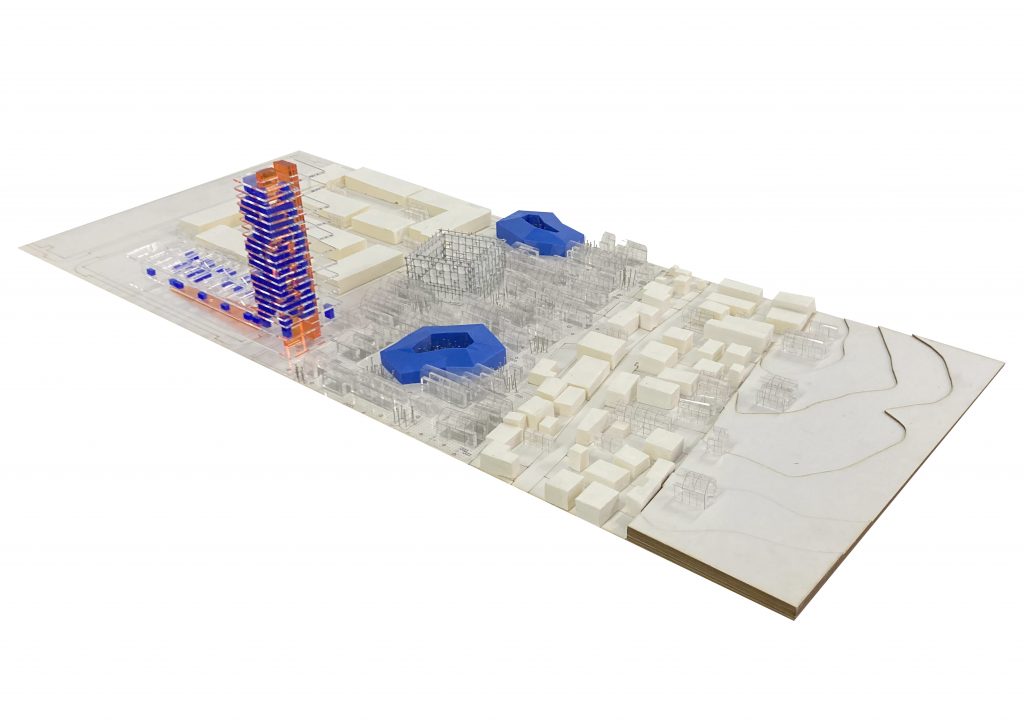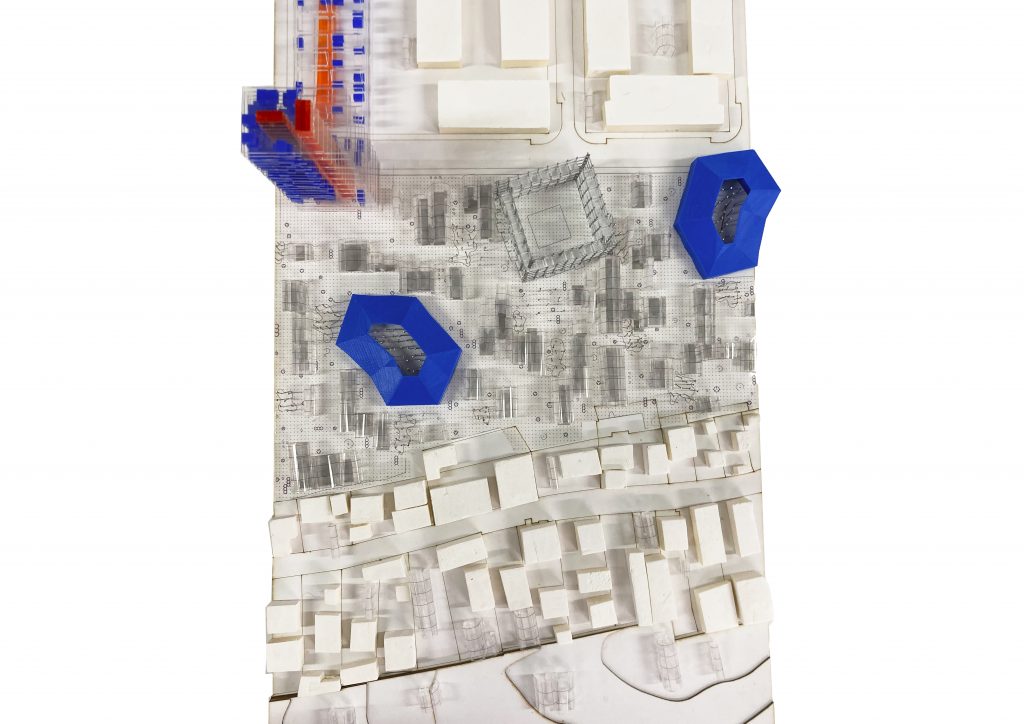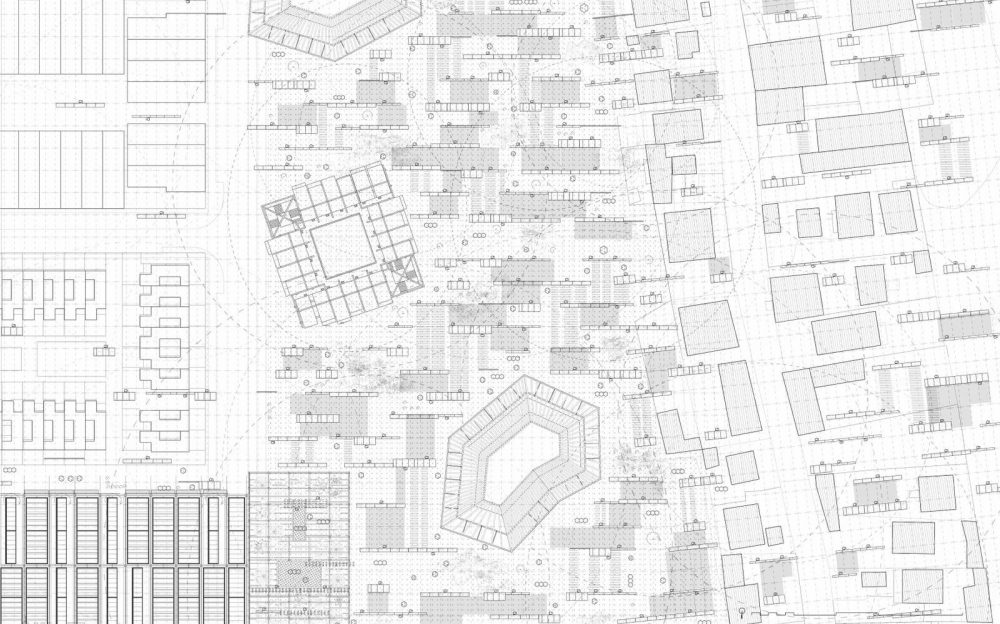


It all begins with four individual perceptions and visions for the area between the Cañada and the Canaveral. One focused on the mobility in the neighbourhood, another on the naturally grown plants, another on the introduction of algae technology and one on the social exposure of the neighbourhood in the news.
This led to collaborative work, where these ideas had to negotiate, evolve, and associate. Experimenting through a model gave us an understanding of the scale, densities, and typologies we were working with. All the pieces came together, and with them a new neighbourhood: the organising infrastructure, the segregating icon, the tying linear structures,
and the vacating modules. The intervention has a clear direction, aiming to connect the Cañaveral with La Cañada. This is accomplished by the introduction of the linear structures. Furthermore, the hexagonal
modules open free space, breaking up this pattern and allowing the spontaneous growth of local plants. Through an acupuncture procedure, two highly dense structures give the neighbourhood its icons. The L-shaped volume acts as the entry way and road traffic filter, forcing the mobility to be strictly peatonal or by bike. The cubical volume strains the traffic
coming through the main street and condensates the activities of the community.
The four interventions collaborate in creating a connected, diverse and unique urban habitat.